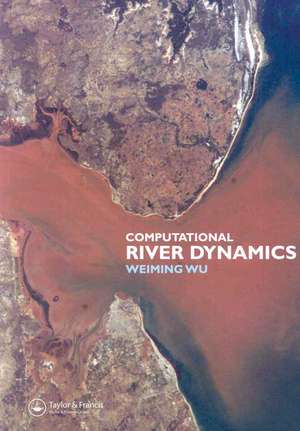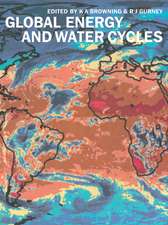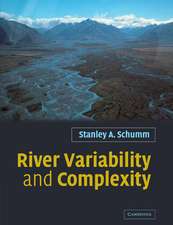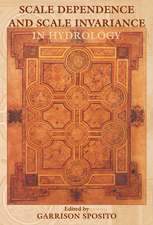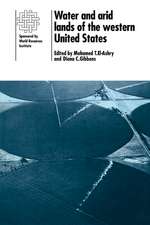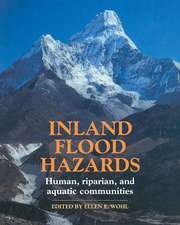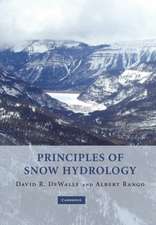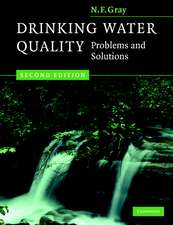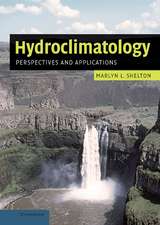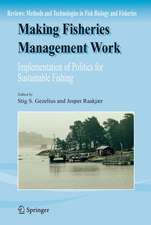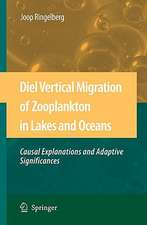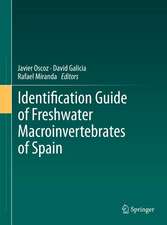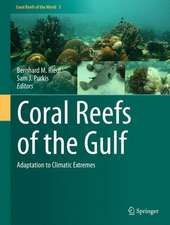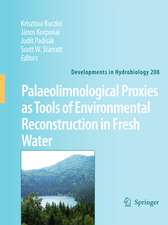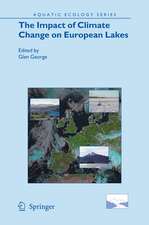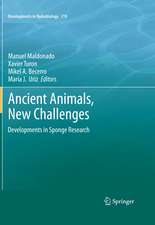Computational River Dynamics
Autor Weiming Wuen Limba Engleză Paperback – 15 noi 2007
Preț: 504.69 lei
Preț vechi: 700.31 lei
-28% Nou
Puncte Express: 757
Preț estimativ în valută:
96.57€ • 105.23$ • 81.38£
96.57€ • 105.23$ • 81.38£
Carte tipărită la comandă
Livrare economică 23 aprilie-07 mai
Preluare comenzi: 021 569.72.76
Specificații
ISBN-13: 9780415449601
ISBN-10: 041544960X
Pagini: 508
Dimensiuni: 174 x 246 x 33 mm
Greutate: 0.88 kg
Ediția:1
Editura: CRC Press
Colecția CRC Press
ISBN-10: 041544960X
Pagini: 508
Dimensiuni: 174 x 246 x 33 mm
Greutate: 0.88 kg
Ediția:1
Editura: CRC Press
Colecția CRC Press
Public țintă
Postgraduate, Professional, and UndergraduateRecenzii
"[...] this book fills one of the sorely needed areas of hydraulic engineering. The topic is fascinating and readers will find a substantial digest of algorithms for the calculation of hydraulics and sediment transport in deformable channels. The book is particularly well suited for savvy numerical modelers. The straightforward notation and apparently flawless presentation of the algorithms are commendable attributes. [...] With his background from China, studies in Europe, and practice in the United States, the author presents this subject from a unique international perspective."
Pierre Y. Julien, Journal of Hydraulic Engineering, October 2008, p. 1542
"The book contains the most extensive coverage of formulas for numerical modeling of sediment transport that I have seen. It is well written with readable English and informative figures. The topics cover most areas of numerical modeling of rivers, from the equation describing the water flow to discretization in 1, 2, and 3 dimensions. [...] Dr. Wu's book is [a] valuable contribution to the field of computational river dynamics."
Nils R. Olsen, Journal of Hydraulic Engineering, October 2008, p. 1543
"[…] the present book is to my knowledge a unique resource for engineers and scientists interested in numerical modeling of flow and sediment transport in alluvial channels." George S. Constantinescu, Journal of Hydraulic Research, vol. 46, no. 6, 2008
"This book is one of the first to present a complete picture of the physical principles and numerical methods used in computational river dynamics."
W. Czernuszenko, Archives of Hydro-Engineering and Environmental Mechanics, vol. 54, no. 4, 2007
‘This book is a brand new addition to the sparse literature on computational river dynamics. It covers a very important subject: the numerical modeling of fluvial processes including turbulent flows in rivers, sediment transport, and the deformation of alluvial channels. This book is very welcome as it provides a worthy synthesis of knowledge in one of the fast growing fields of hydraulic engineering.’
‘With his background from China, studies in Europe, and practice in the United States, the author presents this subject from a unique international perspective.’
Pierre Y. Julien in JOURNAL OF HYDRAULIC ENGINEERING © ASCE. October 2008
‘… the present book is to my knowledge a unique resource for engineers and scientists interested in numerical modeling of flow and sediment transport in alluvial channels.’ George S. Constantinescu in JOURNAL OF HYDRAULIC RESEARCH vol. 46, no. 6 (2008)
'This book is one of the first to present a complete picture of the physical principles and numerical methods used in computational river dynamics.' W. Czernuszenko in ARCHIVES OF HYDRO-ENGINEERING AND ENVIRONMENTAL MECHANICS. vol. 54 no. 4 (2007)
Pierre Y. Julien, Journal of Hydraulic Engineering, October 2008, p. 1542
"The book contains the most extensive coverage of formulas for numerical modeling of sediment transport that I have seen. It is well written with readable English and informative figures. The topics cover most areas of numerical modeling of rivers, from the equation describing the water flow to discretization in 1, 2, and 3 dimensions. [...] Dr. Wu's book is [a] valuable contribution to the field of computational river dynamics."
Nils R. Olsen, Journal of Hydraulic Engineering, October 2008, p. 1543
"[…] the present book is to my knowledge a unique resource for engineers and scientists interested in numerical modeling of flow and sediment transport in alluvial channels." George S. Constantinescu, Journal of Hydraulic Research, vol. 46, no. 6, 2008
"This book is one of the first to present a complete picture of the physical principles and numerical methods used in computational river dynamics."
W. Czernuszenko, Archives of Hydro-Engineering and Environmental Mechanics, vol. 54, no. 4, 2007
‘This book is a brand new addition to the sparse literature on computational river dynamics. It covers a very important subject: the numerical modeling of fluvial processes including turbulent flows in rivers, sediment transport, and the deformation of alluvial channels. This book is very welcome as it provides a worthy synthesis of knowledge in one of the fast growing fields of hydraulic engineering.’
‘With his background from China, studies in Europe, and practice in the United States, the author presents this subject from a unique international perspective.’
Pierre Y. Julien in JOURNAL OF HYDRAULIC ENGINEERING © ASCE. October 2008
‘… the present book is to my knowledge a unique resource for engineers and scientists interested in numerical modeling of flow and sediment transport in alluvial channels.’ George S. Constantinescu in JOURNAL OF HYDRAULIC RESEARCH vol. 46, no. 6 (2008)
'This book is one of the first to present a complete picture of the physical principles and numerical methods used in computational river dynamics.' W. Czernuszenko in ARCHIVES OF HYDRO-ENGINEERING AND ENVIRONMENTAL MECHANICS. vol. 54 no. 4 (2007)
Cuprins
Preface; Notations; 1. Introduction; 2. Mathematical Description of Flow and Sediment Transport; 3. Fundamentals of Sediment Transport; 4. Numerical Methods; 5. 1-D Numerical Models; 6. 2-D Numerical Models; 7. 3-D Numerical Models; 8. Domain Decomposition and Model Integration; 9. Simulation of Dam-Break Fluvial Processes; 10. Simulation of Flow and Sediment Transport in Vegetated Channels; 11. Cohesive Sediment Transport Modeling; 12. Contaminant Transport Modeling; References .
Notă biografică
Weiming Wu has more than twenty years of experience with 1D-, 2D-, and 3D-numerical modeling of turbulent flow, sediment transport, and pollutant transport in surface water systems. He participated in the study of the navigation and sediment problems of the Three Gorges Project in the Yangtze River. He is one of the developers of the FAST3D model, used to simulate sedimentation processes, and the main developer of the CCHE1D model, a channel-network model that is integrated with landscape and watershed models. He has also developed the FVM-based CCHE2D model, a depth-averaged 2D model for unsteady flow and non-uniform sediment transport in open channels.
Descriere
A comprehensive text on the fundamentals of modeling flow and sediment transport in rivers, this book covers the physical principles and numerical methods for various degrees of complexity. It includes 1-D, 2-D, and 3-D models, as well as the integration and coupling of these models, along with a broad selection of numerical methods for open-channel flows. The book discusses sediment transport modeling approaches, sediment transport theory, and non-uniform sediment transport formulae. With worked examples that illustrate various conditions, the books presents the complete picture of physical principles and numerical methods used in computational river dynamics.
